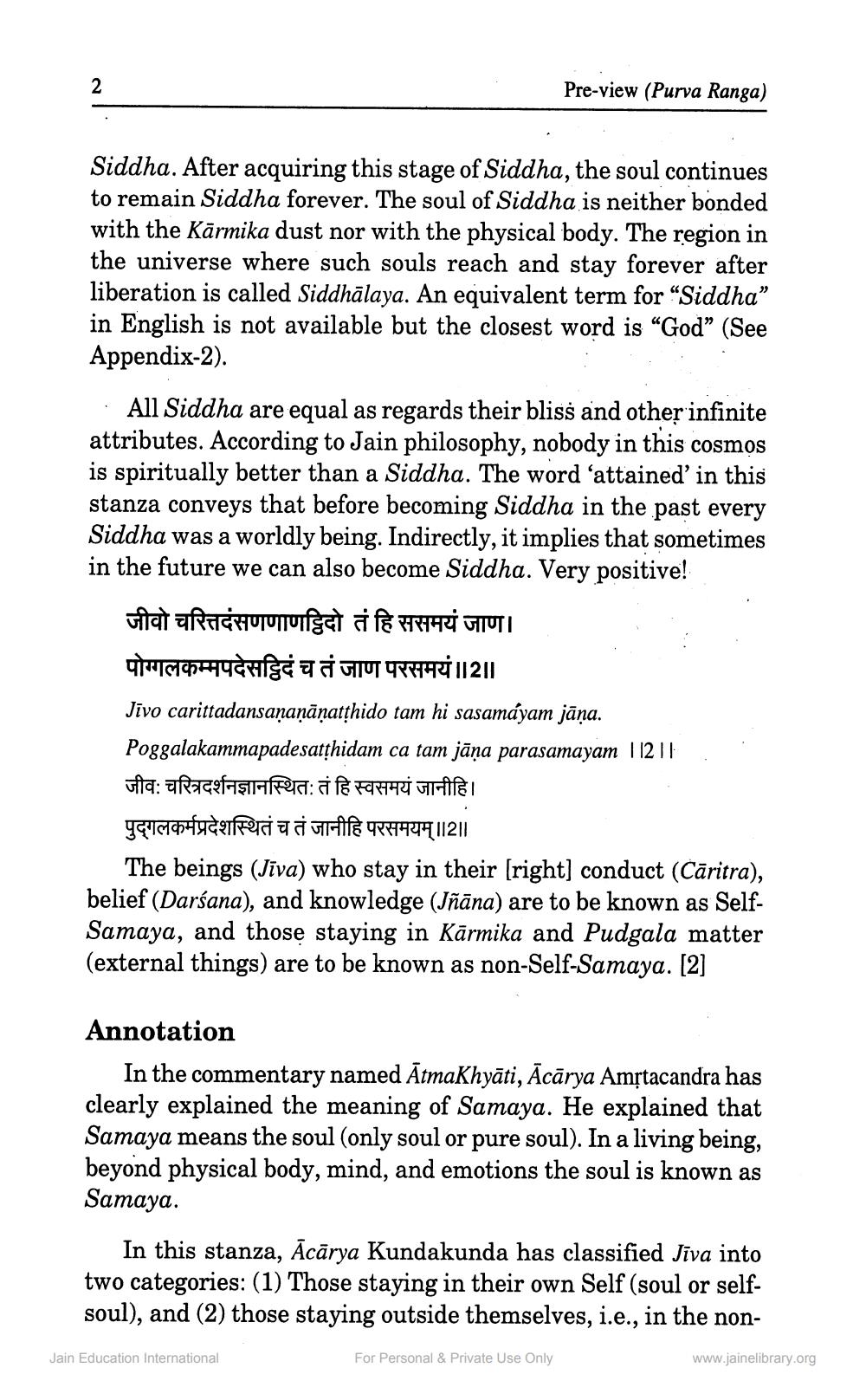________________
Pre-view (Purva Ranga)
Siddha. After acquiring this stage of Siddha, the soul continues to remain Siddha forever. The soul of Siddha is neither bonded with the Kārmika dust nor with the physical body. The region in the universe where such souls reach and stay forever after liberation is called Siddhālaya. An equivalent term for "Siddha” in English is not available but the closest word is “God” (See Appendix-2).
All Siddha are equal as regards their bliss and other infinite attributes. According to Jain philosophy, nobody in this cosmos is spiritually better than a Siddha. The word 'attained in this stanza conveys that before becoming Siddha in the past every Siddha was a worldly being. Indirectly, it implies that sometimes in the future we can also become Siddha. Very positive!
जीवो चरित्तदंसणणाणढिदो तं हि ससमयं जाण। पोग्गलकम्मपदेसट्ठिदं च तं जाण परसमयं ।।2।। Jivo carittadansaņaņāņatļhido tam hi sasamayam jāņa. Poggalakammapadesatthidam ca tam jāņa parasamayam 11211 जीव: चरित्रदर्शनज्ञानस्थित: तं हि स्वसमयं जानीहि। पुद्गलकर्मप्रदेशस्थितं च तं जानीहि परसमयम्।।2।।
The beings (Jīva) who stay in their [right] conduct (Čāritra), belief (Darśana), and knowledge (Iñāna) are to be known as SelfSamaya, and those staying in Kārmika and Pudgala matter (external things) are to be known as non-Self-Samaya. [2]
Annotation
In the commentary named Ātmakhyāti, Ācārya Amstacandra has clearly explained the meaning of Samaya. He explained that Samaya means the soul (only soul or pure soul). In a living being, beyond physical body, mind, and emotions the soul is known as Samaya.
In this stanza, Ācārya Kundakunda has classified Jiva into two categories: (1) Those staying in their own Self (soul or selfsoul), and (2) those staying outside themselves, i.e., in the non
Jain Education International
For Personal & Private Use Only
www.jainelibrary.org




